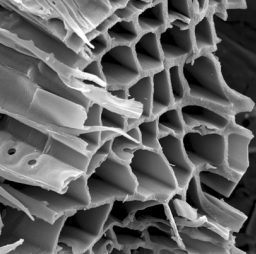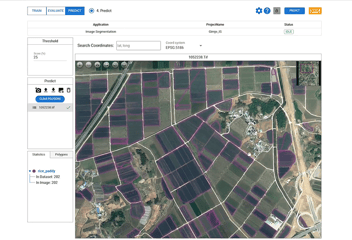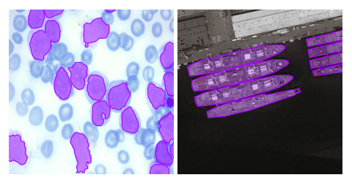Understanding the Quadtree Data Structure

Discover the power and versatility of the quadtree data structure in this comprehensive guide.
The Basics of Quadtree
A quadtree is a tree data structure that is commonly used to partition a two-dimensional space into smaller regions. It is called a quadtree because each node in the tree has four children, corresponding to the four quadrants of the space.
The quadtree starts with a root node that represents the entire space. Each level of the tree divides the space into four equal-sized quadrants. The leaf nodes of the tree represent smaller regions of the space.
The quadtree data structure is particularly useful for spatial indexing and searching. It allows efficient insertion, deletion, and retrieval of objects based on their spatial location.
One of the key advantages of the quadtree is its ability to efficiently handle spatial queries such as range searches and nearest neighbor searches. By recursively subdividing the space, the quadtree can quickly narrow down the search area and eliminate irrelevant objects.
In addition to spatial indexing, quadtrees have a wide range of applications, including image compression, collision detection, geographic information systems, and computer graphics.
Understanding the basics of quadtree is essential for anyone working with spatial data or interested in efficient spatial algorithms.
Applications of Quadtree
Quadtrees have numerous applications in various fields. One of the main applications is in image compression, where quadtree-based algorithms are used to reduce the size of images while preserving their visual quality.
Another important application is in collision detection, where quadtrees can efficiently determine whether two objects in a scene are intersecting or not. By recursively subdividing the space and checking for intersections at each level, quadtrees can greatly speed up collision detection algorithms.
Quadtrees are also widely used in geographic information systems (GIS) to store and query spatial data. They allow efficient retrieval of map data based on location and enable spatial analysis such as spatial joins and overlay operations.
In computer graphics, quadtrees are used for various purposes, including visibility determination, level-of-detail rendering, and spatial indexing of objects in a scene. They can help optimize rendering performance and improve the realism of computer-generated images.
These are just a few examples of the many applications of quadtree. Its versatility and efficiency make it a valuable tool in various domains.
Implementation of Quadtree
There are several different approaches to implementing a quadtree, depending on the specific requirements of the application. However, the basic principles remain the same.
The first step in implementing a quadtree is to define the data structure for representing the nodes. Each node typically contains information such as the coordinates of its bounding box, a list of objects contained within the region, and references to its four children.
To insert an object into the quadtree, the tree is traversed recursively from the root node to the leaf node that corresponds to the object's location. If the leaf node is already full, it may need to be split into four new leaf nodes to accommodate the new object.
To search for objects in the quadtree, a similar recursive traversal is performed. Starting from the root node, the tree is traversed until the search area is narrowed down to a specific region or until the desired objects are found.
Implementing a quadtree requires careful consideration of various factors, such as the choice of coordinate system, the size and shape of the bounding boxes, and the criteria for splitting or merging nodes. Efficient algorithms and data structures are also important for achieving good performance.
There are many resources available that provide detailed explanations and code examples for implementing quadtree in different programming languages. These resources can guide you through the process and help you understand the intricacies of quadtree implementation.
Advantages and Limitations of Quadtree
Quadtrees offer several advantages that make them a popular choice for spatial indexing and searching. One of the main advantages is their ability to efficiently partition a two-dimensional space and handle spatial queries.
By recursively subdividing the space, quadtrees can quickly narrow down the search area and eliminate irrelevant objects, leading to faster query performance. They also allow efficient insertion and deletion of objects, making them suitable for dynamic environments.
Another advantage of quadtrees is their flexibility in representing objects of different sizes and shapes. The bounding boxes associated with each node can be adjusted to tightly fit the objects they contain, reducing wasted space and improving efficiency.
However, quadtrees also have some limitations that need to be considered. One limitation is the storage overhead associated with the tree structure. The tree nodes and their associated data can consume a significant amount of memory, especially for large datasets.
Overall, quadtrees provide a powerful and flexible data structure for spatial indexing and searching. Understanding their advantages and limitations is essential for effectively using them in different applications.
Performance Optimization for High-resolution Images using Quadtree
Quadtree-based algorithms have been widely used for performance optimization in high-resolution image processing. One of the main challenges in handling high-resolution images is the large amount of data that needs to be processed and stored.
By using a quadtree data structure, it is possible to efficiently represent and manipulate high-resolution images. The quadtree can be used to partition the image into smaller blocks, with each block corresponding to a node in the tree.
This allows for efficient storage and retrieval of image data. Instead of storing the entire image in memory, only the relevant portions of the image need to be loaded. This can significantly reduce memory usage and improve processing speed.
Quadtree-based algorithms can also be used for various image processing tasks, such as image segmentation, object detection, and image compression. By recursively subdividing the image and applying specific operations at each level, it is possible to achieve high-quality results with reduced computational complexity.
Performance optimization for high-resolution images using quadtree is an active area of research, with many advancements and techniques being developed. It offers promising solutions for handling the increasing demands of image processing in various domains.
Real-world Examples of Quadtree
Quadtree has been successfully applied in various real-world scenarios, demonstrating its practicality and effectiveness.
One example is its use in geographic information systems (GIS). Quadtree-based spatial indexing allows efficient storage and retrieval of map data, enabling applications such as geocoding, routing, and spatial analysis.
In computer graphics, quadtree is widely used for efficient rendering of complex scenes. By using quadtree-based visibility determination and level-of-detail techniques, it is possible to display highly detailed scenes in real-time.
Quadtree-based algorithms have also been employed in collision detection for video games and simulations. By using spatial partitioning and quadtree traversal, it is possible to efficiently detect and resolve collisions between objects.
These are just a few examples of the many real-world applications of quadtree. Its versatility and efficiency make it a valuable tool in various domains, contributing to advancements in spatial data management, computer graphics, image processing, and more.





